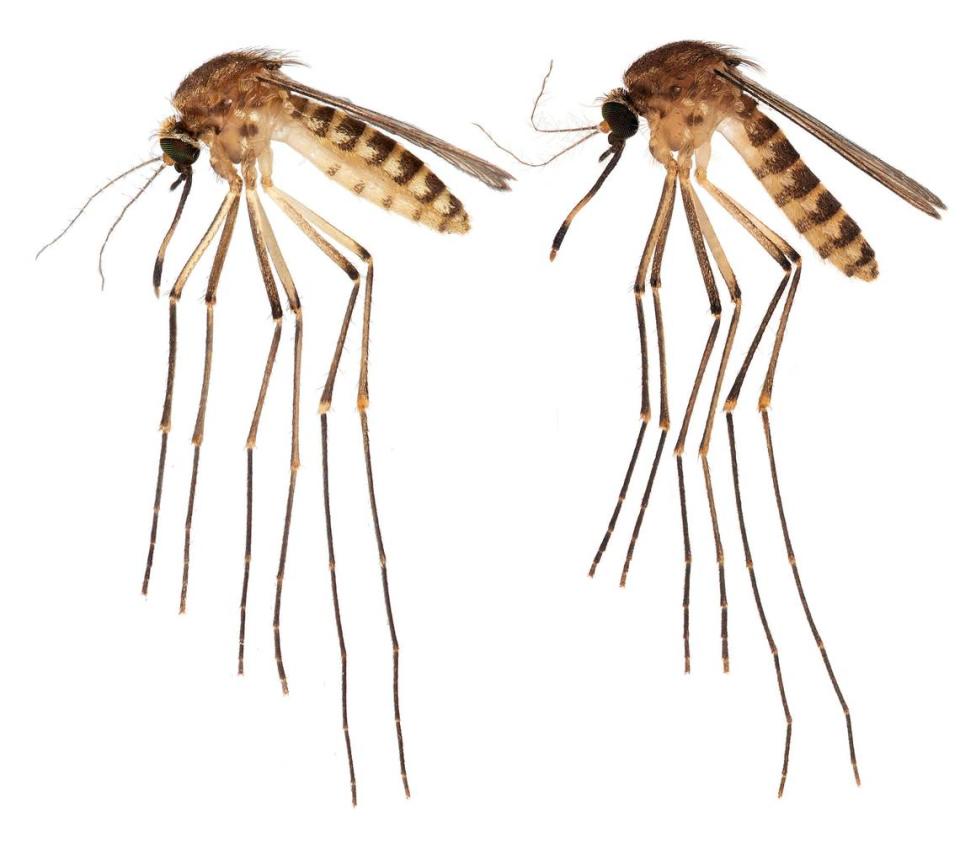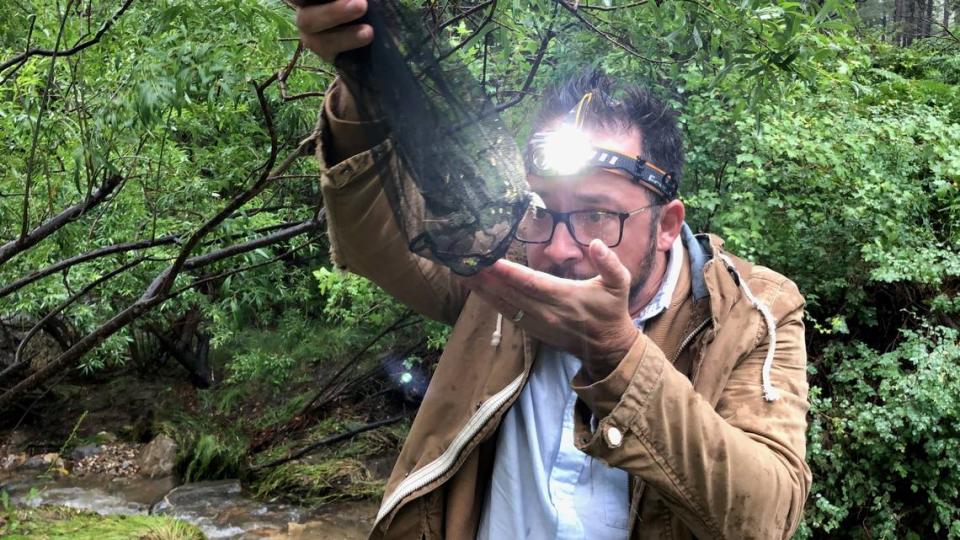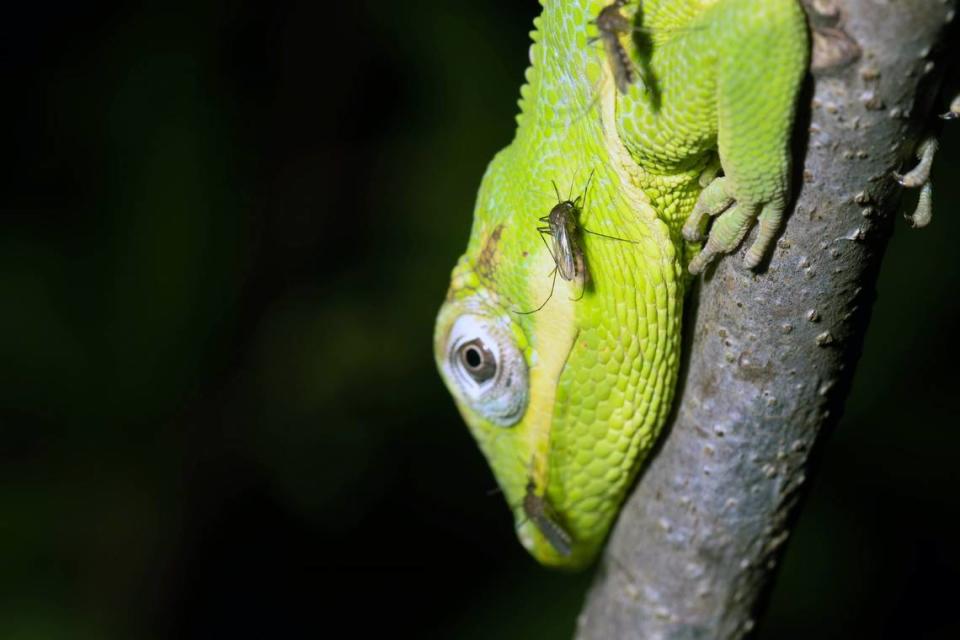A new species of mosquito has moved into South Florida. It likely won’t be the last
There’s a new type of mosquito buzzing in South Florida. So far, it’s only known to bite birds but scientists are studying where it might carry viruses that affect humans, like some of its invasive relatives.
Scientists from the University of Florida first discovered a new-to-Florida species — called only by its scientific name, Culex lactator — in 2018 in Homestead but have only recently confirmed that it was something that hadn’t been seen before in South Florida. The winged pest looked a lot like Florida’s native mosquitoes at first, but genetic testing revealed it was an ex-pat from South America, newly arrived in South Florida.
In a paper published Wednesday in the Journal of Medical Entomology, scientists tracked the arrival and spread of the mosquito throughout South Florida and found it firmly established in Miami-Dade, Collier and Lee Counties. But beyond that, much about this small, striped insect is a mystery.
“We just don’t know a whole lot about this mosquito,” said Lawrence Reeves, an assistant professor of molecular ecology at the University of Florida and lead author of the paper.

The first big question is how it even got here. Unlike the far more common Aedes aegypti mosquito, the Culex lactator needs its eggs to stay wet the whole time, or they’ll dry out and die.
For now, Reeves’ best guess is the tiny creatures were blown north from Mexico and South America in high atmospheric winds.
New arrivals are common in Florida, which is overrun with invasives of the furry, winged and scaled variety. And new mosquitoes also keep coming.
“The discovery of new mosquitoes, in particular, are happening more and more frequently,” Reeves said. “We’re detecting more and more new species.”
READ MORE: Mosquito that carries Zika virus has long, deadly history
Of the 90 types of mosquitoes in Florida, 17 are considered invasive. But one type, the infamous Aedes aegypti, carries most of the diseases humans fear most, like Zika, Dengue and Chikungunya. It’s known as the world’s deadliest creature, with a higher kill count than any other animal on Earth.

Reeves worries that the steady steam of new mosquito arrivals will outpace researchers’ ability to study them and learn what kinds of diseases they carry and spread.
Culex lactator is so new that researchers aren’t sure what kind of diseases it can carry, if any. They’re not even sure yet if it bites people.
Figuring that out requires what Reeves calls “Jurassic Park techniques” where researchers dissect mosquitoes and run DNA testing on the blood in their bellies. Of the two Culex lactators they found with so-called “bloodmeals,” both came from birds.
That’s not surprising, considering that the Culex family of mosquitoes generally preys on birds. Because of that, this family of mosquitoes is a top spreader of West Nile virus and St. Louis encephalitis virus, both of which can sometimes spill over into humans.

“If it’s a mosquito that is going to contribute to the transmission of anything, we would expect it to be one of those,” Reeves said.
Another of Reeves’ recent papers also found that other mosquitoes in the Culex families love to bite lizards in Florida, especially the nonnative brown anoles that scamper across South Florida. If later research finds those lizards, like humans, are “dead ends” for the West Nile virus, it could be a good sign that the spread of West Nile could be kept in check.
The bottom line, Reeves said, is more research is needed. Both for this mosquito in particular and the steady march of new critters into the southern tip of Florida.
“This should be on our radar for this reason: we don’t know what mosquito will be the next Aedes aegypti,” he said.
In Miami-Dade, that radar is monitored by the county’s mosquito control division, which sets and collects more than 300 mosquito traps throughout the county every week. Staffers analyze the thousands of bugs and tally up how many of each species make an appearance.
Sometimes, that leads to finding new ones. William Petrie, head of the division, said his team has identified four or five new species in recent years.
“When we get a mosquito that we don’t quite know what it is, there’s no shortage of people for us to collaborate with,” Petrie said. His team works with Reeves, as well as researchers at the University of Miami and soon, Florida International University, to analyze the patterns they see and learn more about new mosquitoes they find.
Since Petrie arrived in 2017 in the middle of South Florida’s Zika outbreak, he said the county has beefed up its observation and analysis operation to nine surveillance technicians and five people back in the lab to examine the inflow of mosquitoes.
“Surveillance is key. What you’re doing is sampling the population, you’re not trying to control with these traps,” he said. “That can drive operations or it can drive further research.”
What you need to know about dengue, who’s at risk and does it matter where you got bitten?
Correction: An earlier version of this story incorrectly said that Aedes aegypti mosquitoes can spread Malaria, which is spread by the Anopheles mosquito.

 Yahoo Movies
Yahoo Movies 